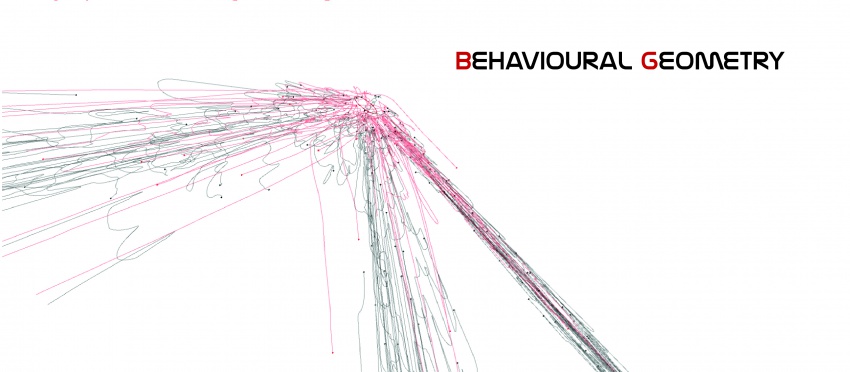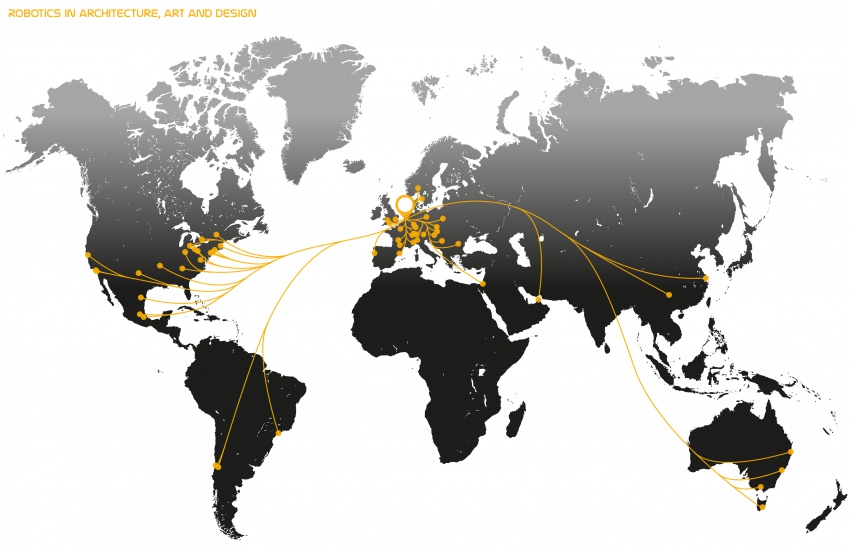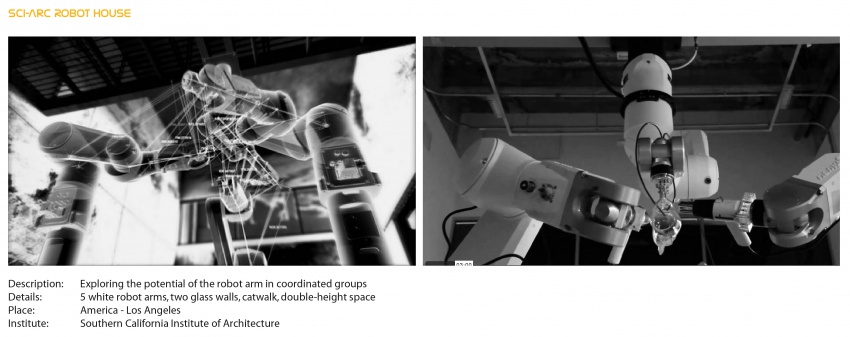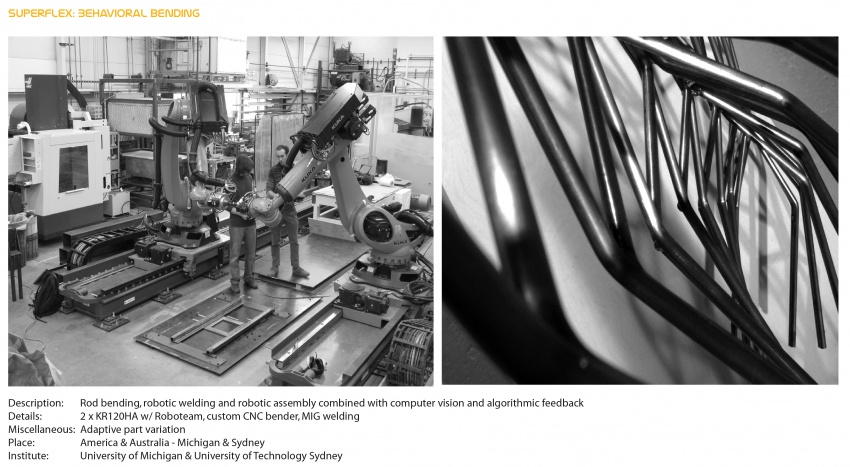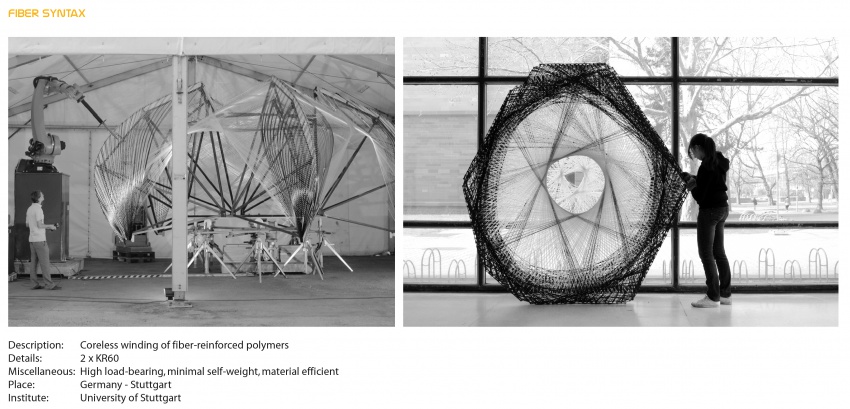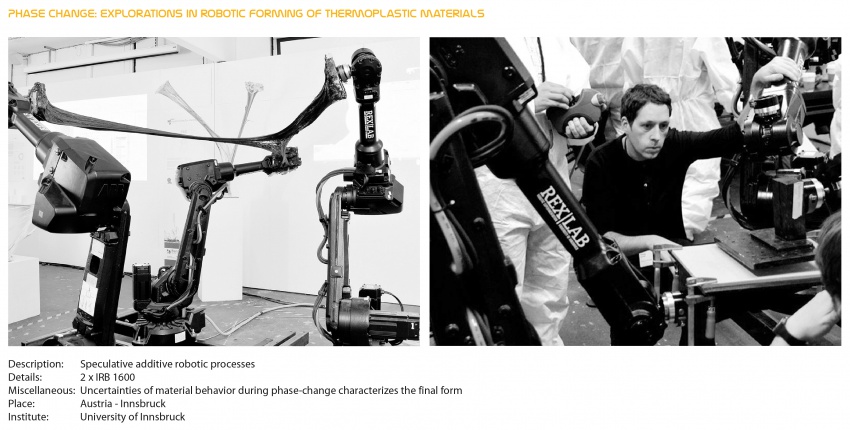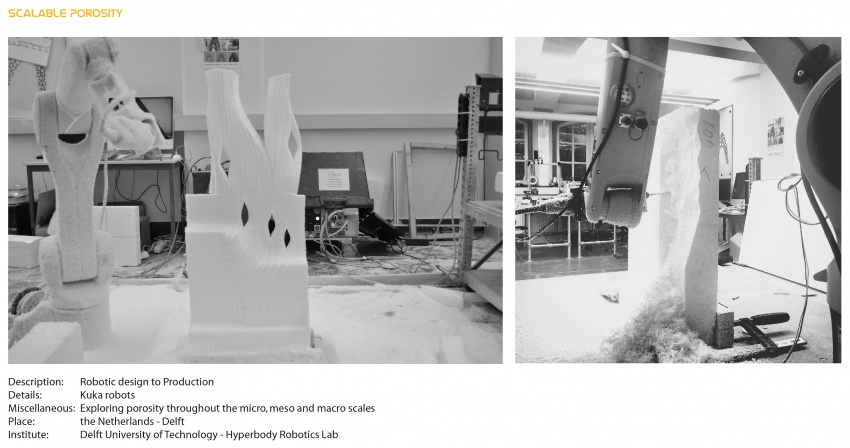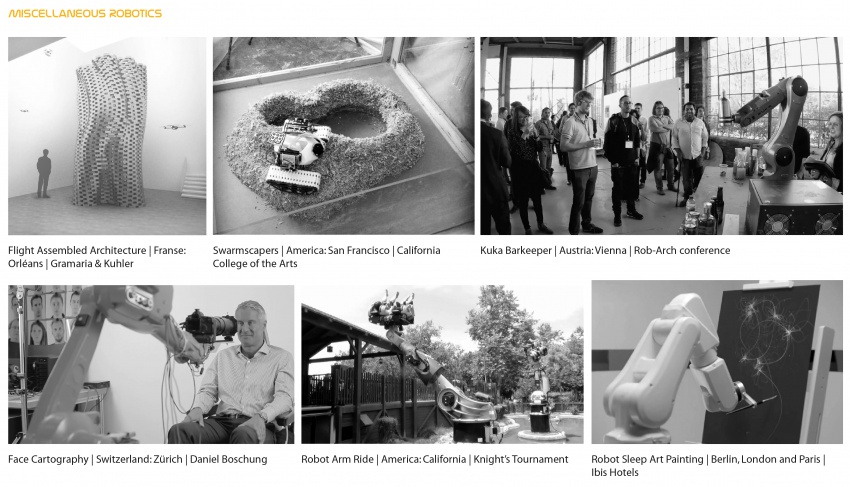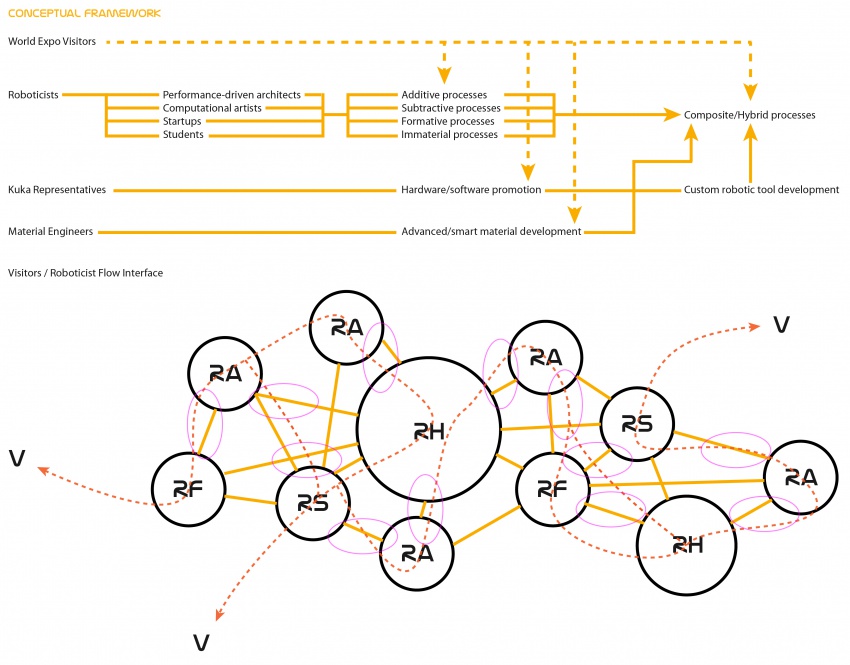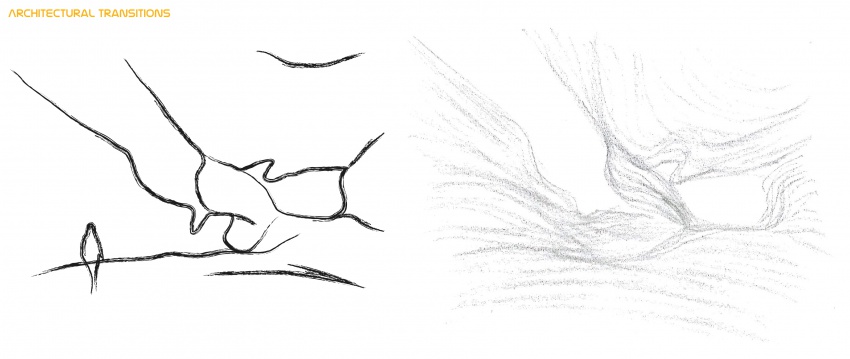project11:Frontpage
The Robotics Consortium
We live in an era were the basic manufacturing conditions of architecture start to shift from manual work to digital fabrication. By using industrial robots combined with computational and algorithmic design systems, new ways of design thinking in architecture can lead to more informed buildings with a higher material efficiency, optimized structures, re-used materials, a minimal energy manufacturing process and in general turn mass production into mass customization, effectively replacing costly existing manufacturing processes of identical elements. The leading research groups and institutes all over the world are tackling several topics regarding robotic production, one challenge at a time, in which we can distinguish between additive, subtractive, formative and to a lesser extend immaterial robotic fabrication processes.
The upcoming Rotterdam World Exposition 2025 offers a unique opportunity to create a platform of collaborating and sharing between the world's leading researchers regarding this topic and for the visitors of the World Expo to learn more about the state-of-the-art of robotics in architecture. Within a theme of collaboration, several specialists within the field of architectural design to robotic fabrication will be brought together under one international pavilion to generate and share ideas, research results and technological developments for the purpose of advancing the discourse surrounding robotic fabrication in architecture. The ultimate goal being to create a design and fabrication process combining additive, subtractive (, immaterial) and formative techniques, culminating in the development of composite or hybrid processes.
Keywords: Collaborating, Networking, Research, Development, Design to Robotic Production, Prototyping, Roboticist Flow, Visitor Flow, Hybrid Processes
Ralph Cloot
The Rotterdam World Exposition 2025 will have an estimated 50.000.000 expected visitors. In past experiences with World Expos, visitor flow stagnation, queues and bottlenecks have always proves to be a recurring issue. If the pavilion(s), and therefore the World Expo as a whole, is to be successful, then how to deal with the stagnation of these visitor flows is going to play a key role in the computational strategy for the pavilion (and its direct surroundings), with an emphasis on the interaction with the internal Roboticists flows and how this effects the spaces themselves and the overall experience of the pavilion.
The Robotics Consortium will host an array of Robotic workshops and research labs, dissipating into separate working cells and converging into a so called ground zero where composite/hybrid robotic fabrication processes will be developed through the combined effort of multiple specialists. Visitors of the World Expo will simultaneously learn and to a certain extend interact within the exhibition areas. How the roboticists and visitors interact with each other, allowing for gradients of public and private spaces, is determined by how the pavilion deals with its transitions between these spaces ranging from fully open to fully enclosed. The actual materialisation of the pavilion itself will be a demonstration of the current robotic capabilities within the field of architecture in order to realise these transitions and to control the movement flows of both the roboticists and visitors.
